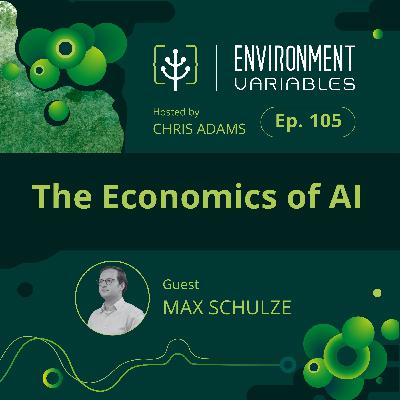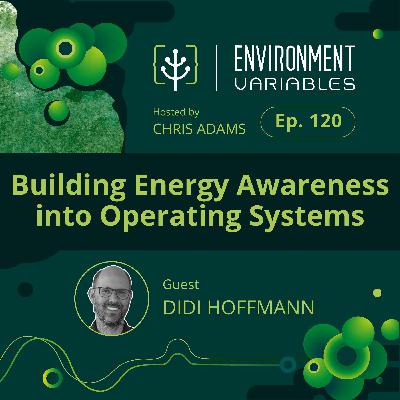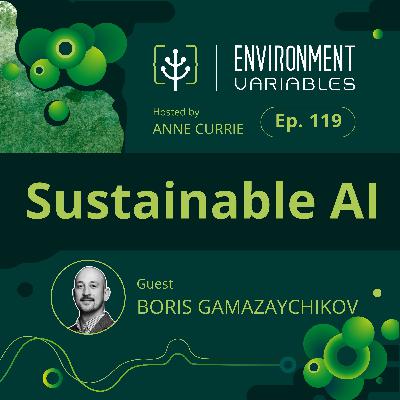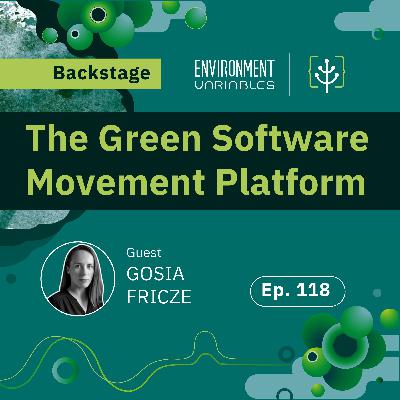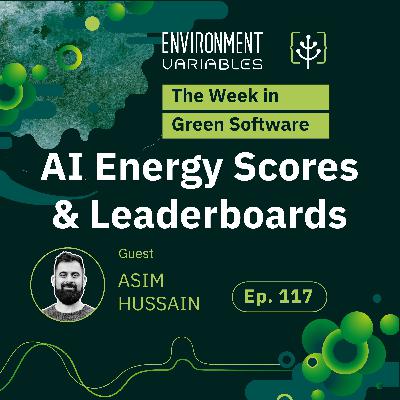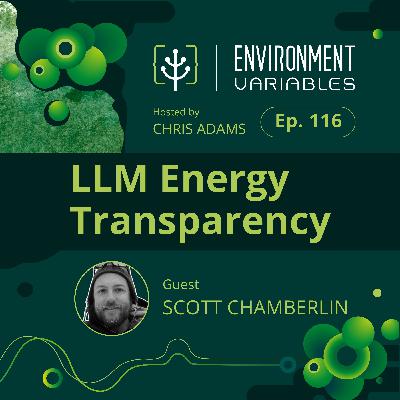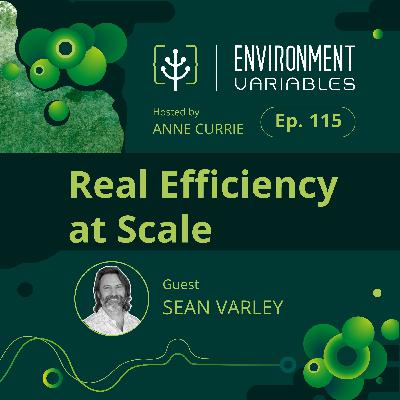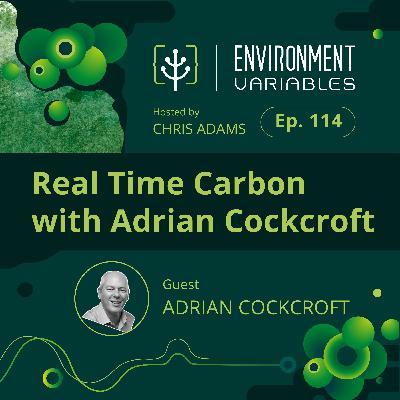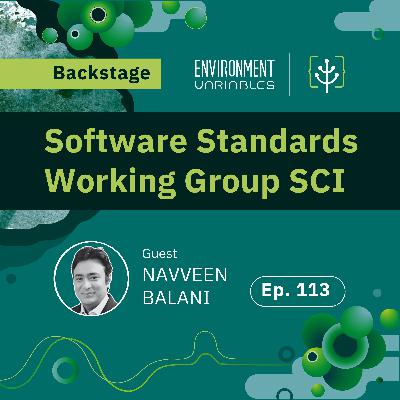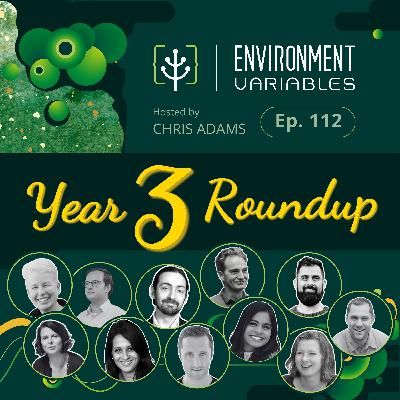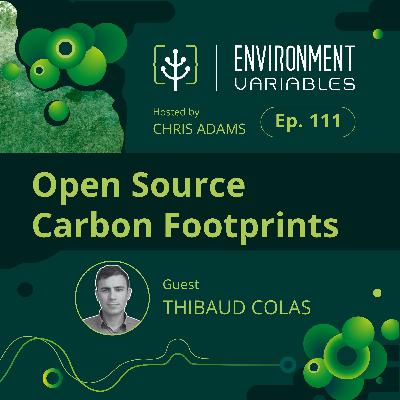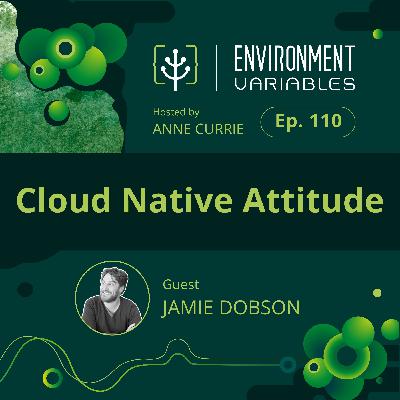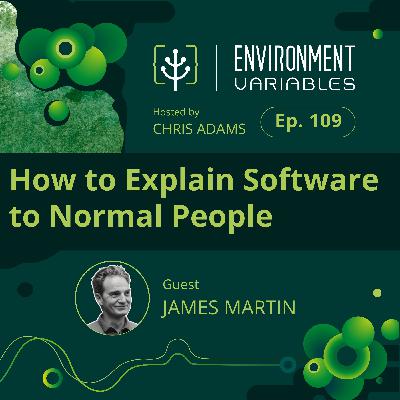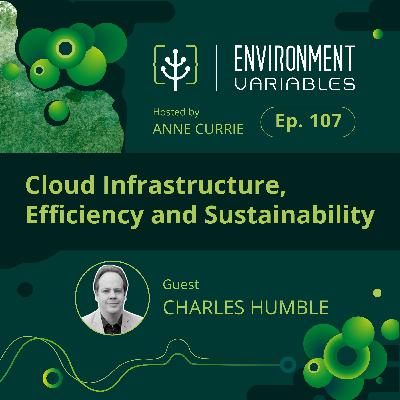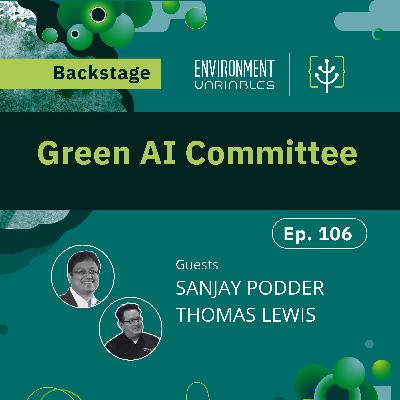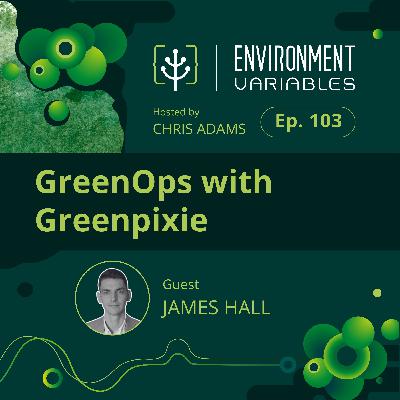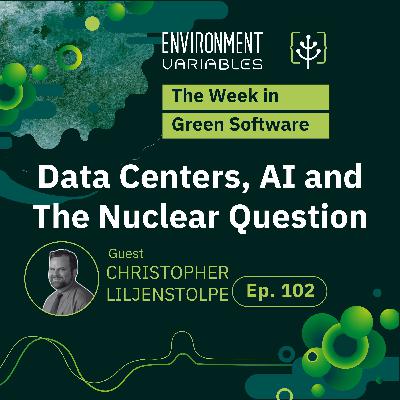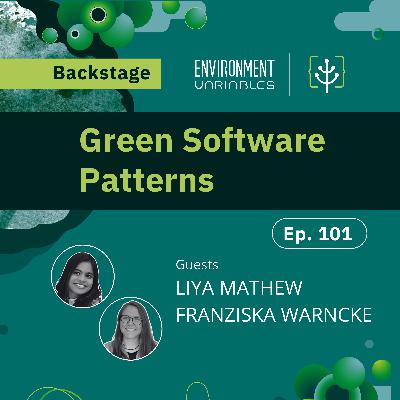The Economics of AI
Update: 2025-04-24
Description
Chris Adams sits down in-person with Max Schulze, founder of the Sustainable Digital Infrastructure Alliance (SDIA), to explore the economics of AI, digital infrastructure, and green software. They unpack the EU's Energy Efficiency Directive and its implications for data centers, the importance of measuring and reporting digital resource use, and why current conversations around AI and cloud infrastructure often miss the mark without reliable data. Max also introduces the concept of "digital resources" as a clearer way to understand and allocate environmental impact in cloud computing. The conversation highlights the need for public, transparent reporting to drive better policy and purchasing decisions in digital sustainability.
Learn more about our people:
Find out more about the GSF:
Resources:
- Energy Efficiency Directive [02:02 ]
- German Datacenter Association [13:47 ]
- Real Time Cloud | Green Software Foundation [22:10 ]
- Sustainable Digital Infrastructure Alliance [33:04 ]
- Shaping a Responsible Digital Future | Leitmotiv [33:12 ]
If you enjoyed this episode then please either:
- Follow, rate, and review on Apple Podcasts
- Follow and rate on Spotify
- Watch our videos on The Green Software Foundation YouTube Channel!
Connect with us on Twitter, Github and LinkedIn!
TRANSCRIPT BELOW:
Max Schulze: The measurement piece is key. Having transparency and understanding always helps. What gets measured gets fixed. It's very simple, but the step that comes after that, I think we're currently jumping the gun on that because we haven't measured a lot of stuff.
TRANSCRIPT BELOW:
Max Schulze: The measurement piece is key. Having transparency and understanding always helps. What gets measured gets fixed. It's very simple, but the step that comes after that, I think we're currently jumping the gun on that because we haven't measured a lot of stuff.
Chris Adams: Hello and welcome to Environment Variables, brought to you by the Green Software Foundation.
In each episode, we discuss the latest news and events surrounding green software. On our show, you can expect. Candid conversations with top experts in their field who have a passion for how to reduce the greenhouse gas emissions of software. I'm your host, Chris Adams. Hello and welcome to another edition of Environment Variables, where we bring you the latest news and updates from the world of sustainable software development.
I'm your host, Chris Adams. We're doing something a bit different today. Because a friend and frequent guest of the pod, Max Schulzer is actually turning up to Berlin in person where I'm recording today. So I figured it'd be nice to catch up with Max, see what he's up to, and yeah, just like catch up really.
So Max, we've been on this podcast a few times together,
but not everyone has listened to every single word we've ever shared. So maybe if I give you some space to introduce yourself,
I'll do it myself and then we'll move from there. Okay. Sounds good. All right then Max, so what brings you to this here?
Can you introduce yourself today? Yeah.
Max Schulze: Yeah. I think the first question, why am I in Berlin? I think there's a lot of going on in Europe in terms of policies around tech. In the EU, there's the Cloud and AI Development Act. There's a lot of questions now about datacenters, and I think you and I can both be very grateful for the invention of AI because everything we ever talked about, now everybody's talking about 10x, which is quite nice.
Like everybody's thinking about it now. Yep. My general introduction, my name is Max. For everybody who doesn't know me, I'm the founder of the SDIA, the Sustainable Digital Infrastructure Alliance. And in the past we've done a lot of research on software, on datacenters, on energy use, on efficiency, on philosophical questions around sustainability.
I think the outcome that we generated that was probably the most well known is the Energy Efficiency Directive, which is forcing datacenters in Europe to be more transparent now. Unfortunately, the data will not be public, which is a loss. But at least a lot of digital infrastructure now needs to, Yeah,
be more transparent on their resource use. And the other thing that I think we got quite well known for is our explanation model. The way we think about the connection between infrastructure, digital resources, which is a term that we came up with and how that all interrelates to software. Because there's this conception too that we are building datacenters for the sake of datacenters.
But we are, of course, building them in response to software and software needs resources. And these resources need to be made somewhere.
Chris Adams: Ah, I see.
Max Schulze: And that's, I think what we were well known for.
Chris Adams: Okay. Those two things I might jump into a little bit later on in a bit more detail.
So, if you're new to this podcast, my name is Chris Adams. I am the policy chair in the Green Software Foundation's Policy Working Group, and I'm also the director of technology and policy in the confusingly, but similarly named Green Web Foundation. Alright. Max, you spoke about two things that, if I can, I'd like to go dive into in a little bit more detail.
So, first of all, you spoke about this law called the Energy Efficiency Directive, which, as I understand it, essentially is intended to compel every datacenter above a certain size to start recording information, and in many ways it's like sustainability-adjacent information with the idea being that it should be published eventually.
Could we just talk a little bit about that first and maybe some of your role there, and then we'll talk a little bit about the digital resource thing that you mentioned.
Max Schulze: Yeah. I think on the Energy Efficiency Directive, even one step up, europe has this ambition to conserve resources at any time and point.
Now, critical raw materials are also in that energy efficiency. Normally, actually, this law sets thresholds. Like it is supposed to say, "a building shall not consume more power than X."
And with datacenters, what they realized, like, actually we can't set those thresholds because we don't know, like reliably how many resources have you consumed?
So we can't say "this should be the limit." Therefore, the first step was to say, well, first of all, everybody needs to report into a register. And what's interesting about that, it's not just the number that in datacenter land everybody likes to talk about, which is PUE, power usage effectiveness. And so how much overhead do I generate with cooling and other things on top of the IT, but also that it for the first time has water in there.
It has IT utilization ranges in there. It even has, which I think is very funny., The amount of traffic that goes in and out of a datacenter, which is a bit like, I don't know what we're trying to measure with this, but you know, sometimes you gotta leave the funny things in there to humor everybody. And it goes really far in terms of metrics on like really trying to see what resources go in a datacenter, how efficiently are there being used, and to a certain degree also what comes out of it. Maybe traffic. Yeah.
Chris Adams: Ah, I see. Okay. Alright, so it's basically, essentially trying to bring the datacenter industry in line with some of other sectors where they already have this notion of, okay, we know they should be this efficient, and like we've had a lack of information in the datacenter industry, which made it difficult to do that.
Now I'm speaking to you in Berlin, and I don't normally sound like I'm in Berlin, but I am in Berlin, and you definitely sound like you are from Germany, even though you're not necessarily living in Germany.
Max Schulze: I'm German.
Chris Adams: Oh yeah. Maybe it might be worth just briefly touching on how this law kind of manifests in v
Comments
In Channel

